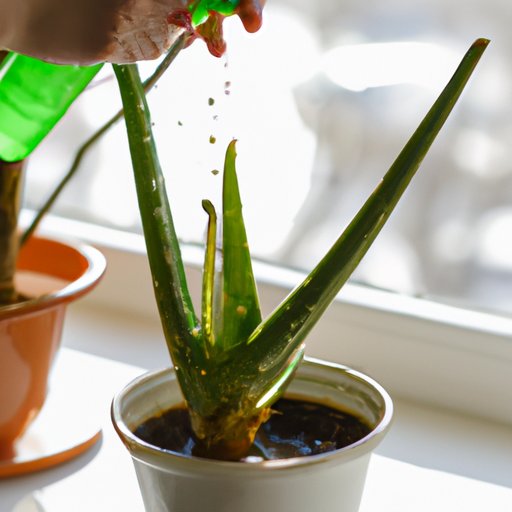Introduction
Aloe plants are one of the most popular houseplants around, due to their low maintenance needs and attractive appearance. Aloe is a succulent, which means that it stores water in its leaves and requires less frequent watering than other plants. However, like any houseplant, aloe does require some basic care in order to stay healthy. In this article, we’ll explore the basics of taking care of an aloe plant.
Placement
Aloe plants prefer bright, indirect sunlight. A south- or west-facing window is usually ideal. If your aloe plant is not getting enough light, it will become “leggy” – that is, the stems will stretch out in search of more light. To avoid this, make sure to give your aloe plant plenty of light.
Watering
Aloe plants should be watered deeply and infrequently. Allow the soil to dry out between waterings. If the soil feels dry, it’s time to water. Make sure to water until excess moisture drains from the bottom of the pot. Too much water can cause root rot, so be careful not to overwater.
Fertilizing
Aloe plants don’t need to be fertilized very often. Once a month is usually sufficient. Use a balanced, liquid fertilizer diluted to half strength. Apply the fertilizer to the soil, avoiding contact with the leaves. Too much fertilizer can burn the roots, so use sparingly.
Avoiding Overwatering
As mentioned above, too much water can cause root rot. Signs of root rot include yellowing leaves, mushy stems, and foul-smelling soil. If you suspect root rot, stop watering immediately and let the soil dry out completely. Trim off any damaged or diseased leaves and repot the plant into fresh, dry soil.
Removing Dead Leaves
Aloe plants naturally shed old leaves from the base of the plant as new growth appears. You can help the process along by removing dead leaves as needed. This will help keep the plant looking neat and tidy.
Pruning
Aloe plants don’t require much pruning, but you can trim away any damaged or diseased leaves as needed. Be sure to use clean scissors or shears to avoid spreading disease.
Repotting
Aloe plants should be repotted into a larger container every two to three years, or when they start to outgrow their current pot. Use a well-draining potting mix designed for succulents. Be sure to water thoroughly after repotting.
Conclusion
Taking care of an aloe plant doesn’t have to be complicated. With the right placement, watering, and fertilizing, you can keep your aloe plant healthy and happy for years to come. Remember to allow the soil to dry out between waterings, fertilize lightly once a month, and repot the plant into a larger container every couple of years.


